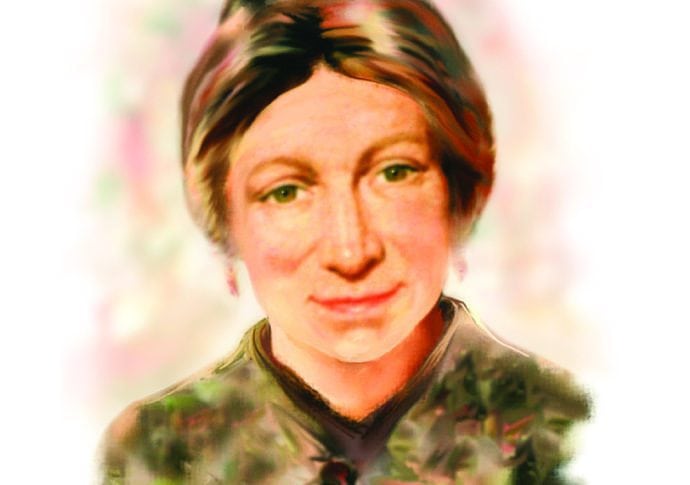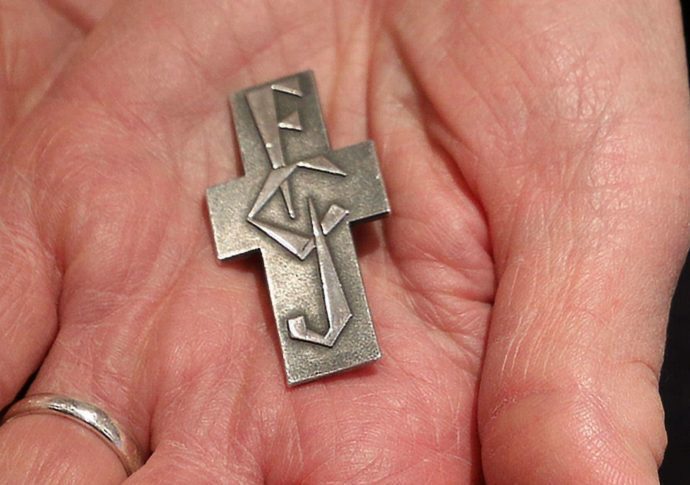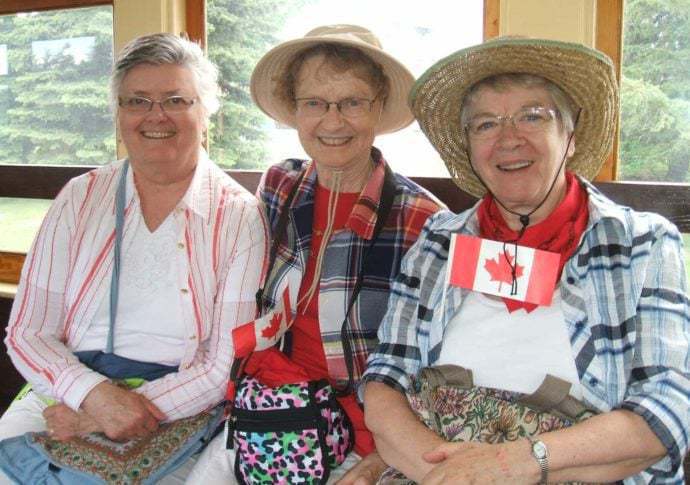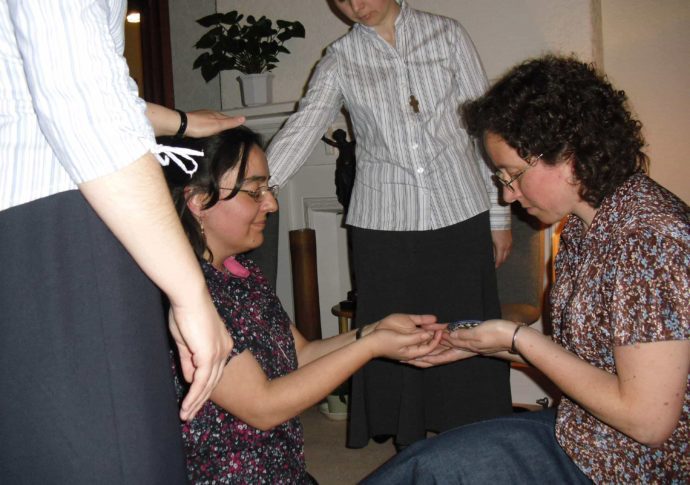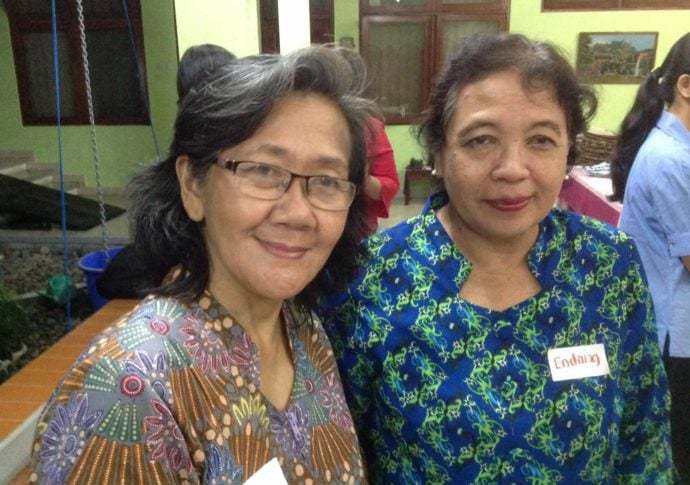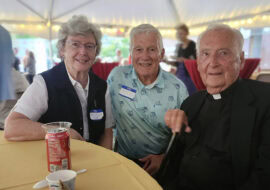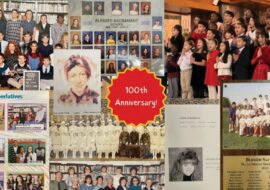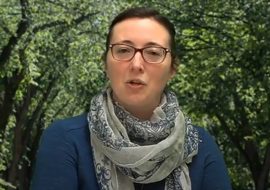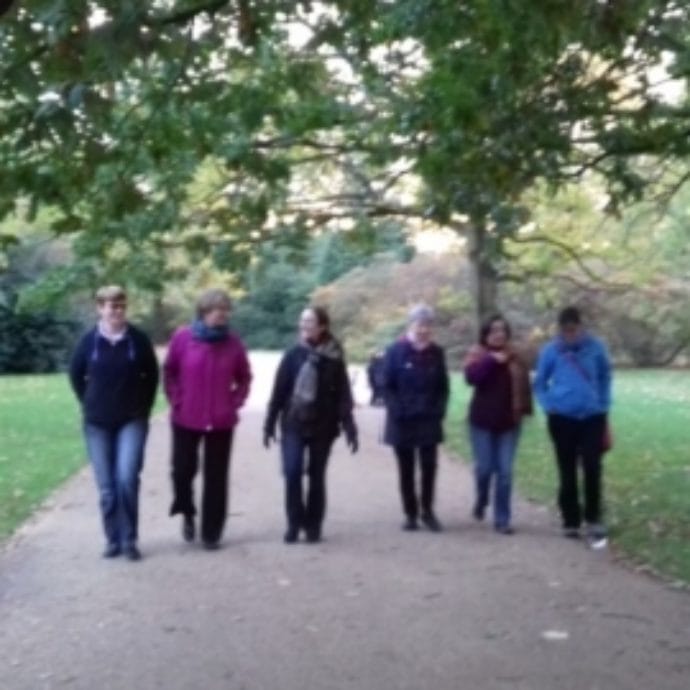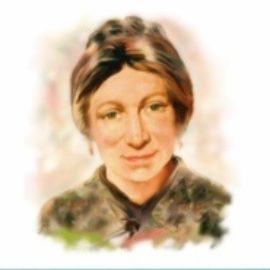We came across this interesting article by Barry Conway, Local Journalism Initiative Reporter at The Eganville Leader in Canada (30 May 2025), which we publish here with his permission.
When Irish nuns came to Combermere to build no ordinary school
It’s a story that beggars belief. A little girl, Catherine Windle, gets born December 12th, 1884 on a hard-scrabble farm, back of the beyond, in Raglan Township. Somehow, her Irish grandparents had escaped the Great Hunger in the middle of the 19th Century and traded the Shannon River that separates County Kerry from County Clare for the Madawaska River that separates Wingle from Latchford Bridge in the Upper Ottawa Valley.
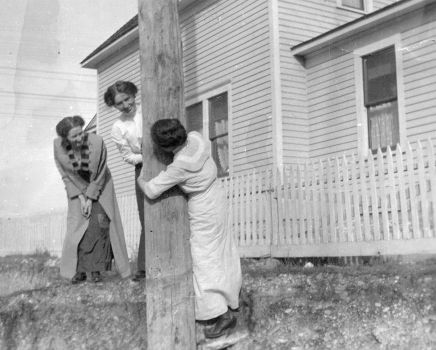
The Windle clan soon found themselves struggling immigrants in Renfrew County, at first settling near Renfrew, then the close-knit family moved to Raglan Township. Ultimately three grand-daughters, Anne, Catherine and Maggie, all moved again, if only temporarily to Alberta.
Back in the 1890s, however, Catherine Windle was a precocious and hardworking young student near Wingle, struggling to complete her schooling locally, though ending her school days in far-away Bancroft. By the beginning of the 20th Century, she had found a job in Bancroft working in a law office. Still, she loved her home near Wingle, even though her ability and skills, if not her future, seemed to want to take her further and further away.
Eventually, she qualified as a legal secretary and by 1905 she and her older sister, Ann left by train for Calgary. There, Catherine did so well as a legal secretary, she bought her own house, that is after spending several years boarding with a curious group of nuns, a French order called The Faithful Companions of Jesus (FCJ).
The FCJ order was established in Amiens, France, in 1820 and dedicated itself especially to educating young girls from around the world. Yet, even though the order was French in origin, it was brimming with Irish recruits, many from along the Shannon, where Catherine’s grandparents had once come from.
The Faithful Companions of Jesus had come to Canada during the Riel Rebellion in the spring of 1885 and had worked several projects on the Prairies where they built schools and educated especially disadvantaged young girls. It was something Catherine knew something about, and felt very strongly towards, and so like Saul on the road to Damascus, she soon decided to change the direction of her life’s work.
On June 2nd, 1913, Catherine Windle joined the Faithful Companions of Jesus and after returning to Raglan to tell her parents, she travelled to Upton-on-the-Wirral in England where on January 10th, 1916, she made her final vows. By September of that same year, she returned to Canada where she went back to school to qualify as a teacher before taking up teaching duties at St. Mary’s High School in Edmonton. Two years later she was moved to St. Mary’s Girl’s School in Calgary where her inspector reports considered her both „impressive and effective.”
So much so, that in 1920 it was no great surprise when Sister Catherine Windle was asked to become private secretary to the order’s General Superior in Belgium, Sister Philomena Higgins, who, ironically, was Irish, the first non-French woman to lead the order. Three years later, Sister Windle was elected to the FCJ general council and in 1934, she was elected as Assistant General.
During the Second World War, the General Superior’s office had to be removed to Kent in England, where it was bombed in 1944 while Sister Windle was in the building. She survived but when the General Superior eventually died in 1947, it was Sister Catherine Windle who was elected as the new General Superior, the top job, and the first Irish-Canadian to hold it.
One of her first duties as head of the order involved a new girl’s board school that was to be built in Mission, British Columbia, yet shortly before construction was to begin, the building site along the Fraser River was unexpectedly flooded. So, the FCJ order needed to regroup quickly, if not find another location somewhere else in Canada.
As it turned out, Catherine Windle never forgot the hardship she had as a young girl trying to complete her own education. Her decision was simple and consistent with FCJ’s mission. In 1948, the Faithful Companions of Jesus established that new St. Mary’s boarding and day school in Combermere, where it could provide secondary education for both foreign boarders and local children. In 1952, Sister Windle even offered her own scholarships for two student places in the new Combermere boarding school.
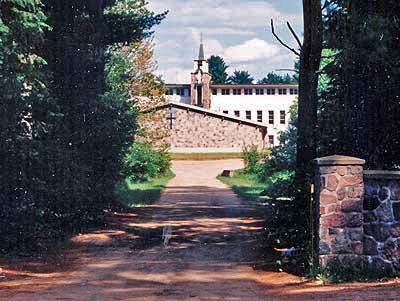
The rest, they say, is history. St. Mary’s in Combermere school soon established itself as an excellent boarding school, attracting students from as far away as South America. It also had a robust coterie of local, day students, many who were attracted by its unique commercial course that turned out more than a few business graduates and executive secretaries. So much so, that by the 1960s, federal deputy ministers in Ottawa would often hire St. Mary’s graduates, sight unseen, knowing their students were always a cut above the rest.
Curiously, because so many of the FCJ nuns who taught at St. Mary’s in Combermere were Irish in origin, it was often thought the school had been established by an Irish order. And with teaching nuns whose family names included Cavanagh, Doyle, Fitzgerald, Murphy, O’Connell, Ryan, Somerville and Vallely, who could blame people for making that mistake.
Throughout her tenure as General Superior, Catherine Windle would build five new FCJ houses in Canada and England and several new schools. As well, the FCJ order made countless improvements to most of its other houses and schools internationally.
But in May 1966, Catherine Windle’s health finally gave out and so she resigned as General Superior. Curiously, she then made a trip to Ireland to convalesce along the Shannon but eventually she had to return to London, England where she died in October, 1967. She is buried in Poles, Ware, just northeast of London.
Her parents — John and Bridget (nee Culhane) — and most of her siblings — Patrick, Mary, Bridget, Margaret and John, are all buried in St. Francis Xavier Church, Latchford Bridge. [1] Anne and Catherine are not.
It’s probably just as well. By the end of the 1970s, after nearly 30 years St. Mary’s School in Combermere was no more. Yet, there are still many of its graduates throughout the Ottawa Valley and elsewhere who fondly remember that little girl from Raglan and all the good work she accomplished.
[1] NB: Catherine Windle’s family are buried at St. Francis de Sales Church, Latchford Bridge, not St. Francis Xavier Church as listed in this article, which is in Renfrew.
The Canadian Press. All rights reserved.
Photos: FCJ archives





